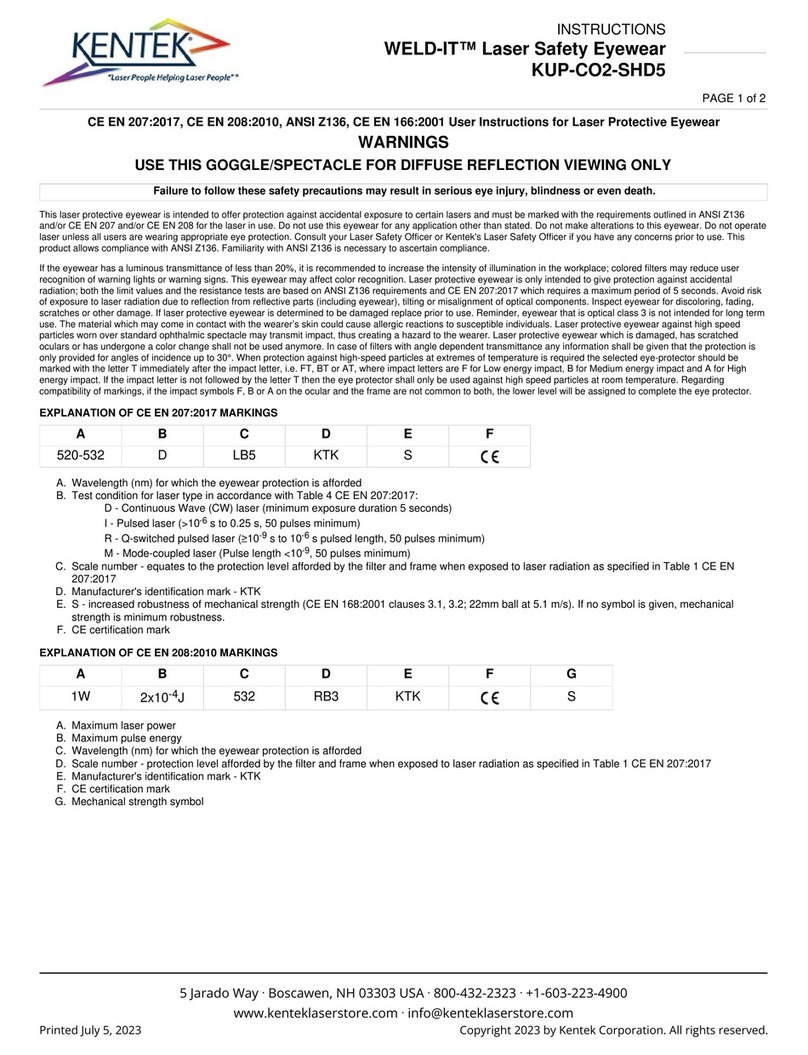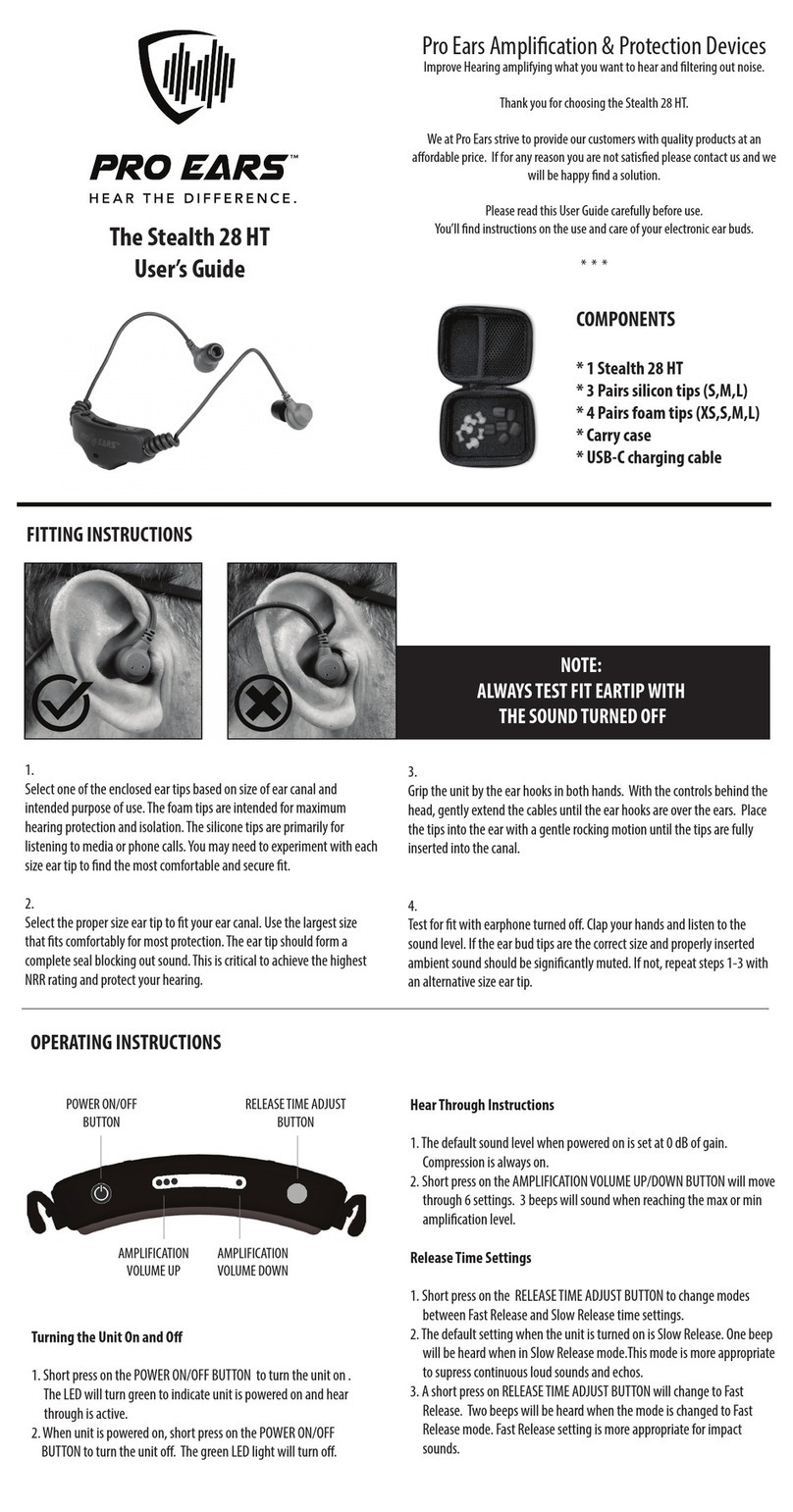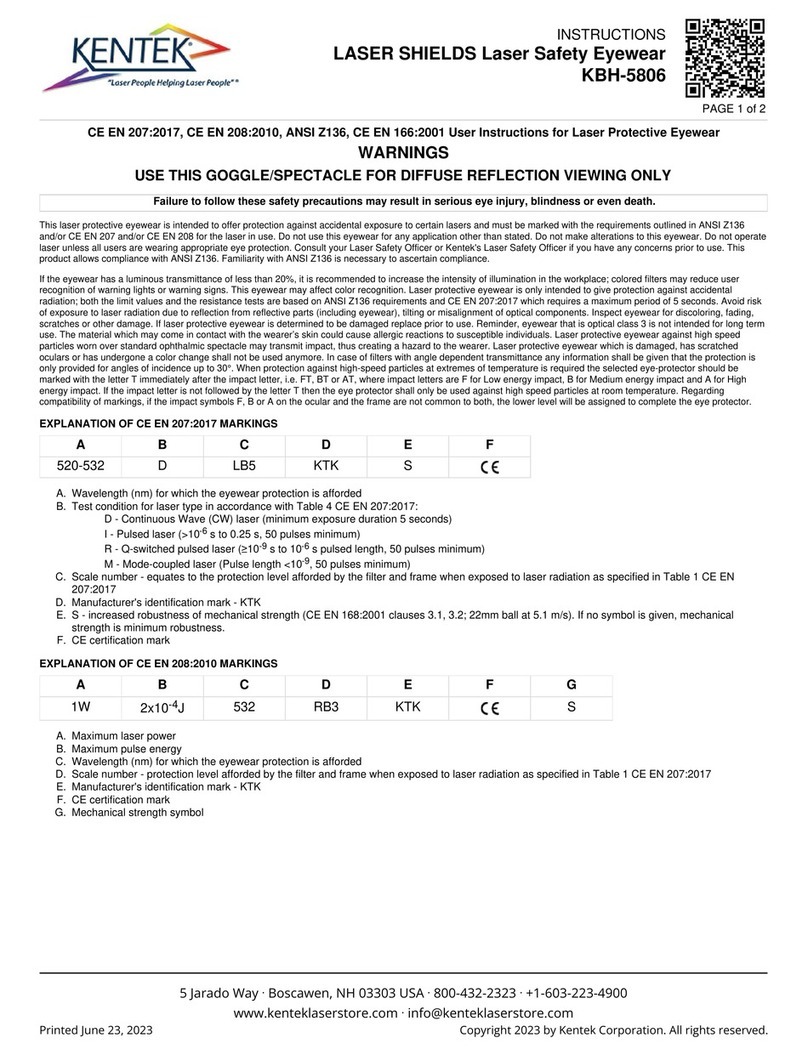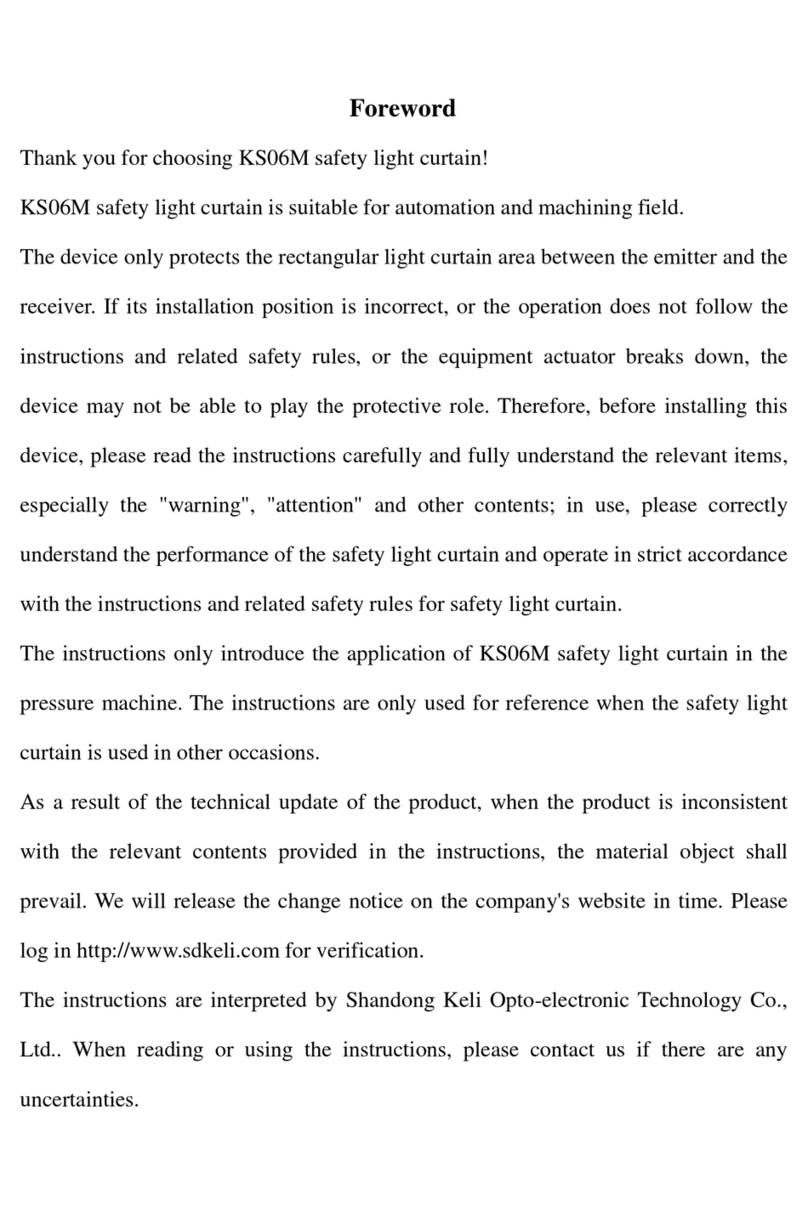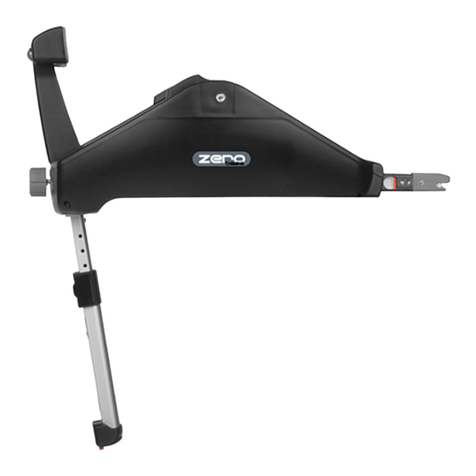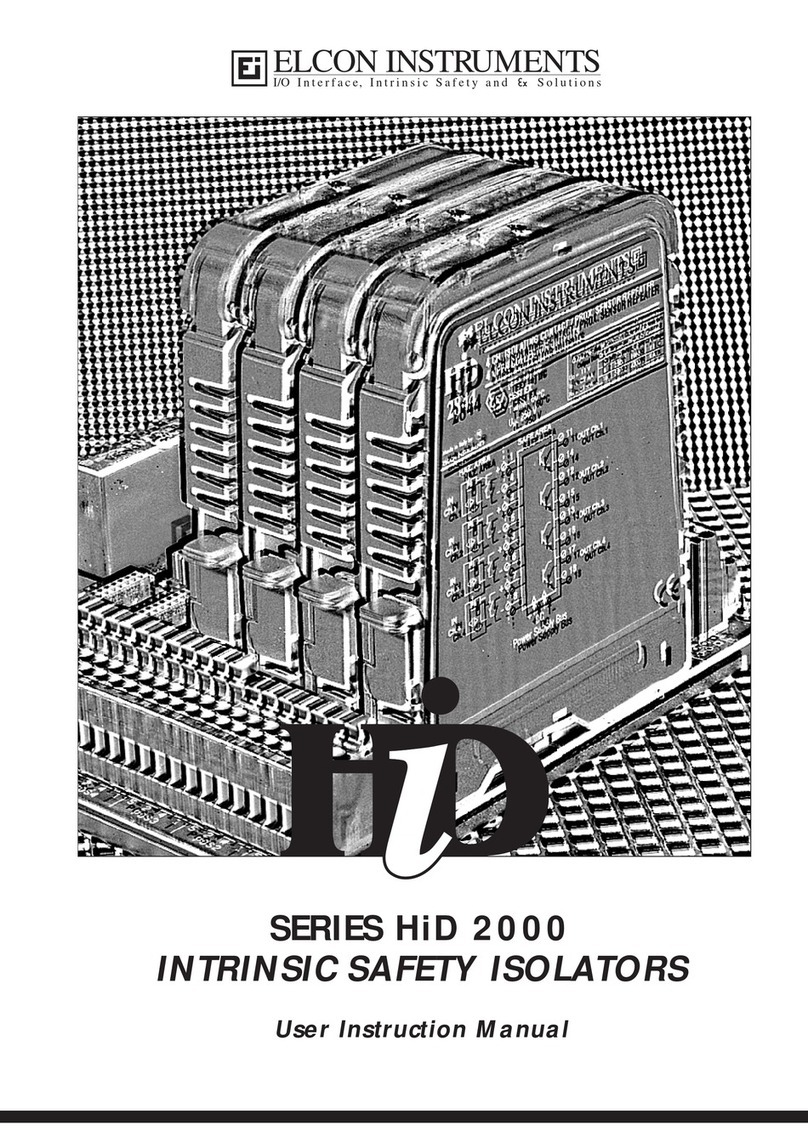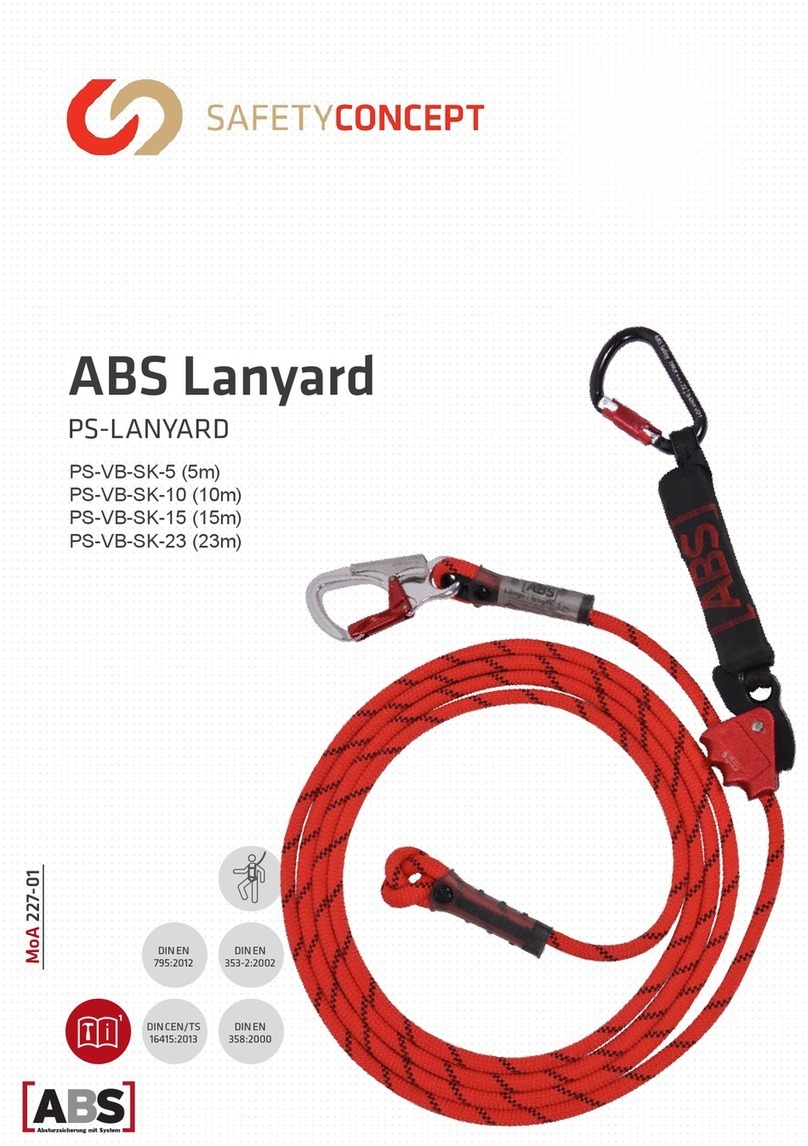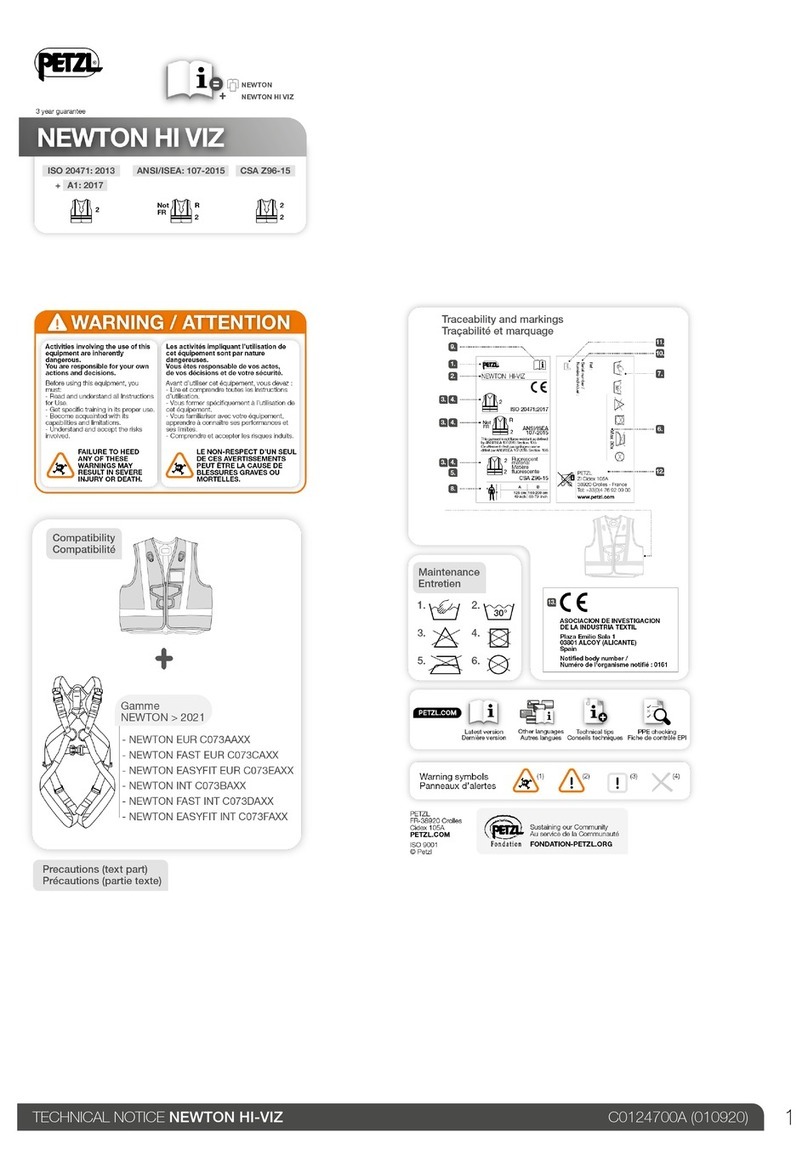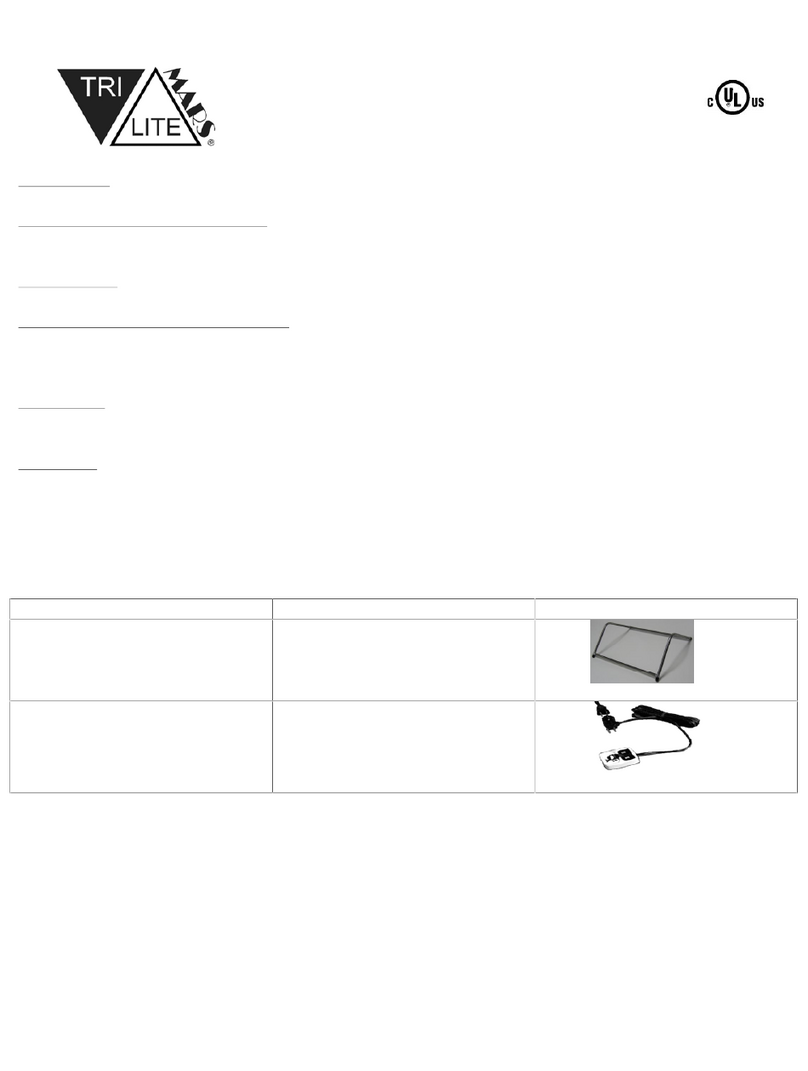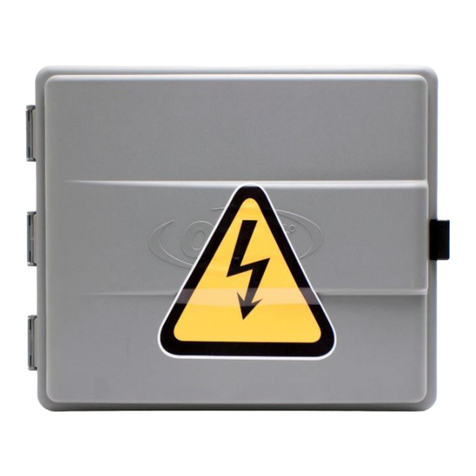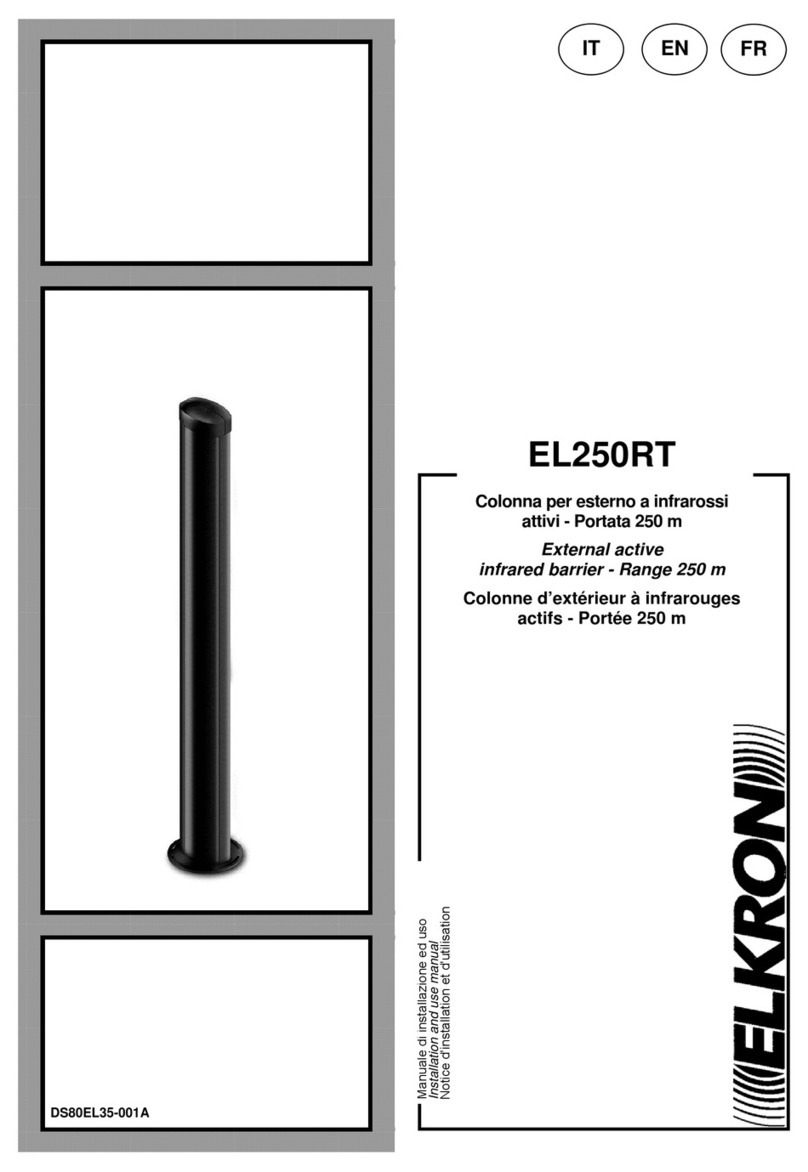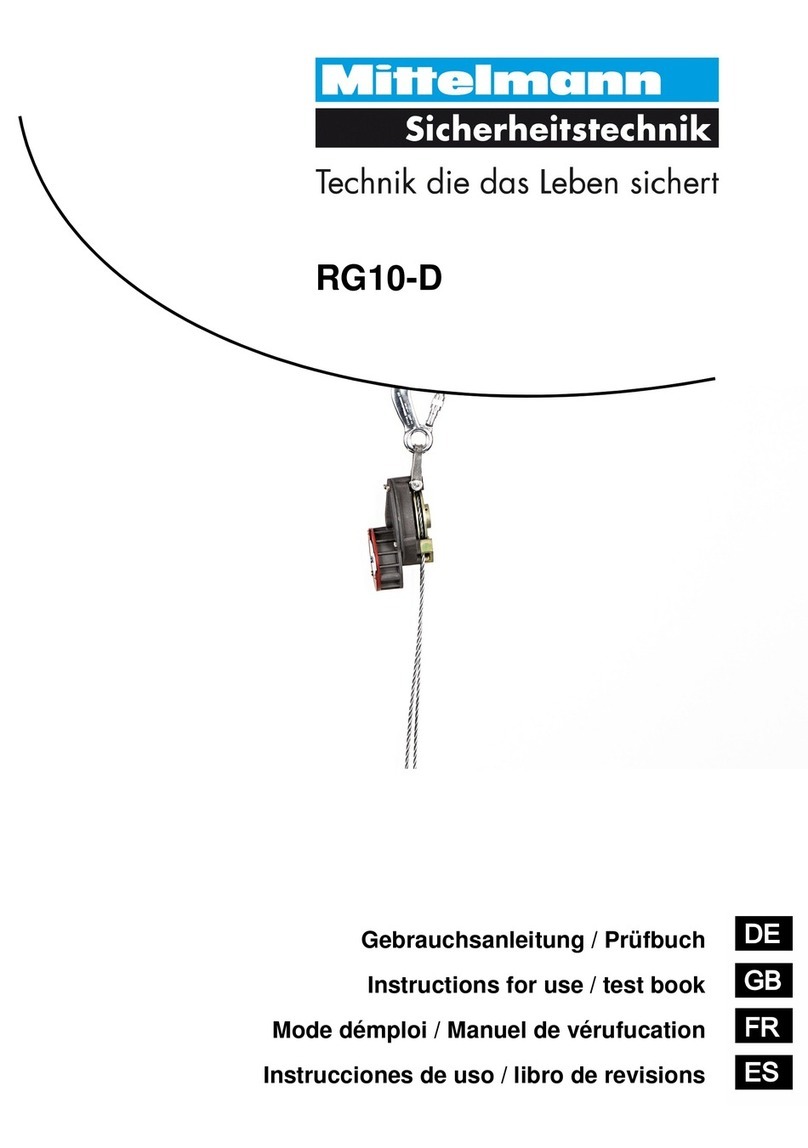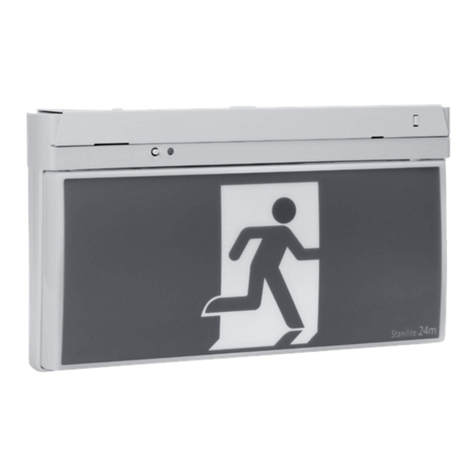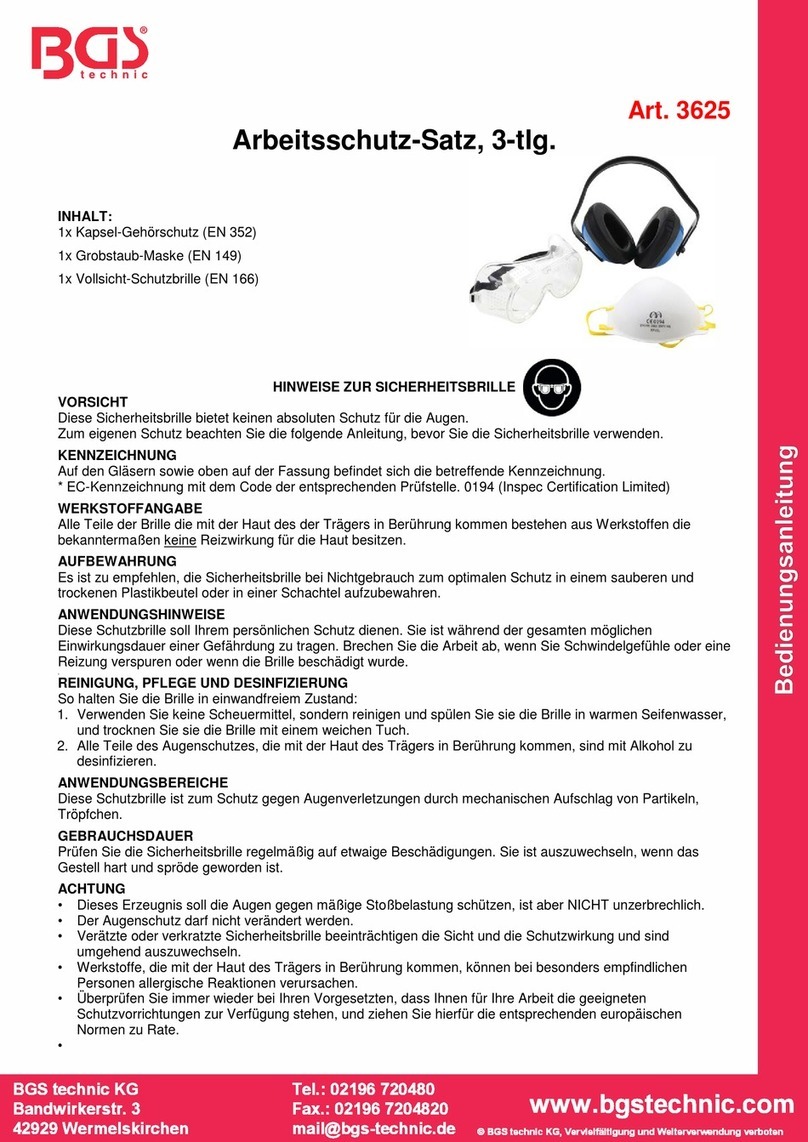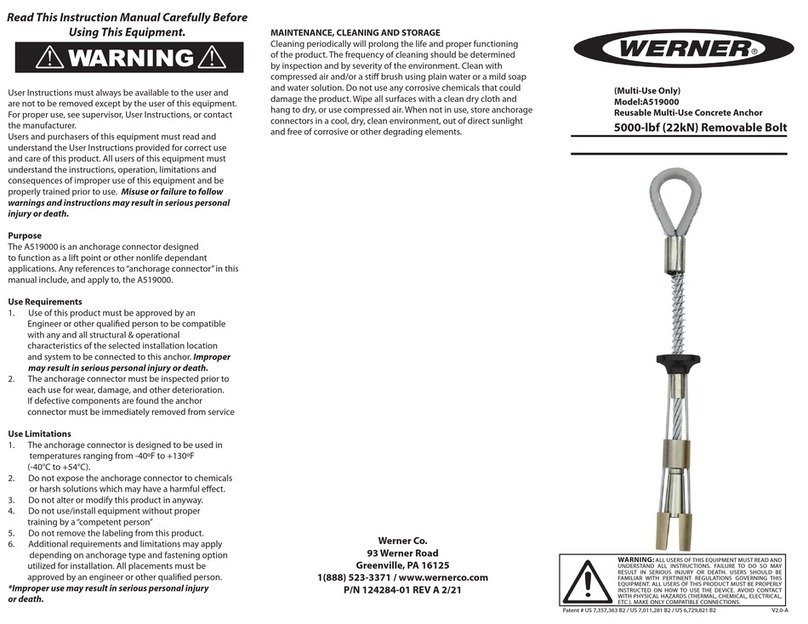BLUCHER SARATOGA CBRN PROTECTIVE COVERALL User manual

INSTRUCTION MANUAL
CBRN PROTECTIVE COVERALL
POLYPROTECT 12
Applicable for
BLÜCHER®Style No.: 549252
Issue: 2013
Class 1
Type 5
EN 1073-2: 2002
0158
DIN EN ISO
13982-1 2011-02

Instruction Manual CBRN Protective Coverall, Issue 2013 Page 2 of 20
Paragraph of
DIN EN 14325:2004 Title Class
4.4 Abrasion resistance 2
4.5 Flex cracking
resistance 6
4.7 Trapezoidal
tear resistance 6
4.10 Puncture resistance 2
5.5 Seam strength 5

© by BLÜCHER®GmbH 2013 Page 3 of 20
This manual is addressed to all persons responsible for the
CBRN protective coverall and/or working with the CBRN
protective coverall.
This manual must be
• read
• understood
and
• followed during all activities
This is a precondition for
• safe working with the CBRN protective garment
• trouble free handling
We recommend keeping this manual always with you all times.
®

Instruction Manual CBRN Protective Coverall, Issue 2013 Page 4 of 20
Danger to life and limb:
• if not used according to the intended purposes
• if used incorrectly by untrained persons
• in case of nonobservance of the instructions given in
this manual
Important instructions and remarks in this manual are
emphasized with the following words:
is stated for working operational procedures
which must be exactly followed in order to avoid any
danger to persons
stands for technical requirements which have to
be observed in particular
stands for important information
The CBRN protective coverall is only suitable for use within the range
of purposes set out in section 2.

© by BLÜCHER®GmbH 2013 Page 5 of 20
The CBRN protective coverall shall be worn together with a breathing
protective mask (respirator) and breathing protective filter (filter
canister), CBRN protective gloves and CBRN overboots (=personal
CNBC protection equipment). The nominal protection factor IL class 1
of EN 1073-2 was achieved with respirator M2000 of Dräger Safety AG
& Co. KGaA, Lübeck. If other masks used the nominal protection factor
IL class 1 of EN 1073-2 can not be guaranteed.
The CBRN protective coverall is put on (outside of the contaminated
area) when
• danger from a specific chemical warfare agent must be assumed
or
• a mission or task has to be fulfilled in a contaminated area.
The CBRN protective coverall protects against all known skin
damaging and skin penetrating specific chemical warfare agents
(according to section 5).
The CBRN protective coverall should not be used when
in contact with acids or alkalines.

Instruction Manual CBRN Protective Coverall, Issue 2013 Page 6 of 20
The CBRN protective coverall must be worn in the
correct size in order to provide complete protection.
A
Body Height
Short Regular Long
B
Chest
XXS 73-80
150-155 ----- -----
XS 81-88
156-161 ---- -----
S 89-96
162-167
168-173
174-179
M 97-104
168-173
174-179
180-185
L 105-112
174-179
180-185
186-191
XL 113-120
180-185
186-191
192-197

© by BLÜCHER®GmbH 2013 Page 7 of 20
The CBRN protective coverall is manufactured from an air
permeable two layer textile fabric compound:
• The outer layer (shell fabric) is impregnated with an oil and water
repellency treatment.
• The inner layer (filter laminate) is a laminated composite consisting
of the following layers:
◦Non woven fabric (covering layer = layer next to the shell fabric)
◦Activated carbon spheres (adsorptive layer)
◦Warp knitted fabric (lining fabric = layer next to the skin)
Shell fabric: 100 % PA
Filter laminate: Covering layer: 100 % PA
Adsorptive layer: 100 % activated carbon SARATOGA®
Lining fabric: 100 % PES
CO = Cotton, PES = Polyester, PA = Polyamide
SARATOGA®is a registered trademark of BLÜCHER®GmbH

Instruction Manual CBRN Protective Coverall, Issue 2013 Page 8 of 20
The two layer textile fabric compound as mentioned in section 4.1
offers protection against specific chemical warfare agents according
to “TNO-PML test methods for air-permeable and air-impermeable
CNBC protective materials (PML 2004-PU2)”.
• Laid drop diffusive flow test
(10 g HD/m2, 10 cm2, 1 μl drops, 12 hours)
• Vapour test
(55 mg HD/m3, 1 m/sec, 12.56 cm2, 12 hours)
Nominal protection factor IL class 1 of EN 1073-2
• Before use, check the CBRN protective coverall for
completeness and proper condition
• The CBRN protective coverall ensures the necessary
protection only if the personnel:
◦master the timely and intended use of the
protective coverall.
◦are psychologically and physically able to carry out
missions under CBRN protection at any time.
• Aschemicalprotectiveequipmentmaycauseheat
strain of the wearer it is recommended that sweat
management underwear is used and that rest periods
of sufficient duration are scheduled.

© by BLÜCHER®GmbH 2013 Page 9 of 20
• The accumulated wear time in a non-contaminated environment is
20 calendar days.
• The lifetime of the suit after opening the original bag is 100 calendar
days.
• The storage in the unopened and undamaged original package will
be guaranteed for 10 years (according to section 8.).
• The suit is washable for 6 times (according to section 7.1).
The assistance of a second person is necessary
when putting on (donning) the CBRN protective
coverall.
Do not exceed the washing and wear time limits
Note the
• date on which the CBRN protective coverall was
removed from the factory sealed bag.
• days the CBRN protective coverall has been worn.
• number of washing and drying cycles the CBRN pro-
tective coverall has gone through.
Once , the CBRN protective coverall
A re-use of a contaminated CBRN protective coverall
is strictly forbidden.

Instruction Manual CBRN Protective Coverall, Issue 2013 Page 10 of 20
Fig. 1: Putting on the CBRN protective coverall
6.2.1 Adjusting the protective coverall
Fig. 1, sequence 1
1. Put on the protective coverall.
2. Wearing the attached socks step into the CBRN overboots.
3. Pull down the leg overlap to cover the CBRN overboots.

© by BLÜCHER®GmbH 2013 Page 11 of 20
6.2.2 Adjusting the protective coverall
Fig. 1, sequence 2
1. Tighten the draw-strings at the hem by using the cord lock.
6.2.3 Putting on the respirator and sealing the hood
Fig. 1, sequence 3 and 4
1. Close the zip fastener.
2. Put on the respirator with filter canister.
3. Pull the hood of the protective coverall over the head and tighten
it against the respirator with the elasticated hood seal.
4. Close the front flap.
6.2.4 Sealing the coverall sleeves
Fig. 1, sequence 5
1. Put on the textile gloves.
2. Put your thumb through the thumb loop.
3. Pull over the rubber gloves.
4. Pull down arm overlap to wrist.
5. Close hook and loop fasteners.
Follow the instructions for the respirator.
The responsible head of the operation must determine
the type of filter canister to be used.
Check tight fit of the hood on the respirator and adjust it
if necessary.

Instruction Manual CBRN Protective Coverall, Issue 2013 Page 12 of 20
Check for a tight fit of the coverall sleeves on the
protective gloves, and adjust if deemed necessary.
While taking off the CBRN protective coverall,
the assistance of a second person wearing
protection equipment (respirator and filter canister,
protective gloves and body protection equipment)
is necessary.
Observe the following strictly when taking off (doffing) a
contaminated CBRN protective coverall:
• Take off the equipment only out of the contaminated
area and only outside, however, if possible in a
protected, draught-free place which is, if possible,
covered with a roof.
• Observe the direction of the wind when taking off the
equipment.
Avoid contact of the unprotected underwear and the skin
with the possibly contaminated outer layer of the CBRN
protective coverall.

© by BLÜCHER®GmbH 2013 Page 13 of 20
Fig. 2: Taking off a contaminated CBRN protective coverall

Instruction Manual CBRN Protective Coverall, Issue 2013 Page 14 of 20
When taking off contaminated CBRN protective coverall the following
sequence is recommended:
1. Pull the overlap above the ankle (Fig. 2, sequence 1).
2. Open the CBRN overboots and shake the CBRN overboots off.
3. Open the hook and loop fasteners of the arm sleeves
(Fig. 2, sequence 2).
4. Open the hook and loop fasteners of the hood.
5. Open the front flap and zip fastener on the front of the protective
coverall (Fig. 2, sequence 4).
6. Take the outside of the hood in both hands and pull it completely
down the back.
7. Open the draw-strings of the hem.
8. Take the sleeve and at the same time the CBRN protective glove
and pull them half way off from the hand (Fig. 2, sequence 3).
9. Pull the second sleeve and the second CBRN protective glove off
as described under number 8.
10. Take the upper part of the CBRN protective coverall by both hands
from inside and drop it making sure you are standing down wind
(Fig. 2, sequence 4). At the same time while standing down wind
shake one CBRN protective glove off and pull the arm out of the
sleeve. Shake the second CBRN protective glove off and pull the
arm out of the arm sleeve.
11. Take the inside of the lower part of the CBRN protective coverall
with both hands and push it down off.
12. Reach with both hands under the strips of the respirator on the
head and throw the respirator off down wind (Fig. 2, sequence 6).
13. Take off the textile inner gloves.
The respirator is only to be removed when the signal has
been given that there is no danger of contamination.

© by BLÜCHER®GmbH 2013 Page 15 of 20
6.4.1 Transport
Transport a contaminated CBRN protective coverall only in suitable
packaging (e.g. a plastic bag) and make sure it is sufficiently labelled.
6.4.2 Disposal
Disposing of the contaminated CBRN protective coverall is to be
conducted in compliance with the relevant and valid environmental
regulations.
Do not touch a contaminated CBRN protective coverall
with unprotected skin or the underwear.

Instruction Manual CBRN Protective Coverall, Issue 2013 Page 16 of 20
CBRN protective coveralls but have
become very dirty during training operations
as long as the 6 washing and drying cycles are not exceed
within the 20 calender days wear time.
After each washing cycle, cut off the corresponding
portion of the blue label. Check the suit according
to section 7.2.
7.1.1 Instruction for care
Follow the instructions given on the care label.
Before washing and drying, engage all zippers and
fastener tapes, to minimize the risk of rips, tears
ore other damage during laundering.
The CBRN protective coverall may not be pierced, e.g.
with pins or badges, etc.
After 7 washing and drying cycles , the CBRN protective
coverall may only be used as a training suit –

© by BLÜCHER®GmbH 2013 Page 17 of 20
Washing: 40 °C fine washing - gentle wash
cycle. Fill drum only half
Detergent:
Only use mild washing detergents
Do not use softeners
Rinsing: Rinse twice thoroughly after
washing
Spin-drying: Spin-dry for approx. 20 sec. after
washing, max. 1100 rpm, detergent
AATCC1193, dosage 0,25g/l
Chlorination:
Ironing: Iron moderately hot (maximum ironing
temperature: 150 °C)
Dry cleaning:
Drying: Drying in a tumbler moderately hot

Instruction Manual CBRN Protective Coverall, Issue 2013 Page 18 of 20
Visual check to be conducted:
• after each usage
• after any care procedure acc. to section 7.1
Check the shell fabric (outer layer) and the filter laminate (inner layer)
for damage such as:
• holes
• tears
• abrasion
Visible damage and changes in the personal CBRN
protective equipment reduce the protection performance.
Mark damaged parts and exchange them immediately.
As long as the CBRN protective coverall is kept in its
original and factory sealed bag, there is no need for
maintenance.

© by BLÜCHER®GmbH 2013 Page 19 of 20
Store the coverall in its original factory sealed bag in a
clean and dry environment without direct exposure to
sunlight and heat.

Copyright©2013 by BLÜCHER®GmbH
All rights reserved. No part of this instruction manual may be
reproduced in any form without the prior written permission of
BLÜCHER®GmbH.
BLÜCHER®GmbH
Mettmanner Str. 25
40699 Erkrath | Germany
tel +49 211 92 44 0
fax +49 211 92 44 211
info@bluecher.com
www.bluecher.com
Table of contents
